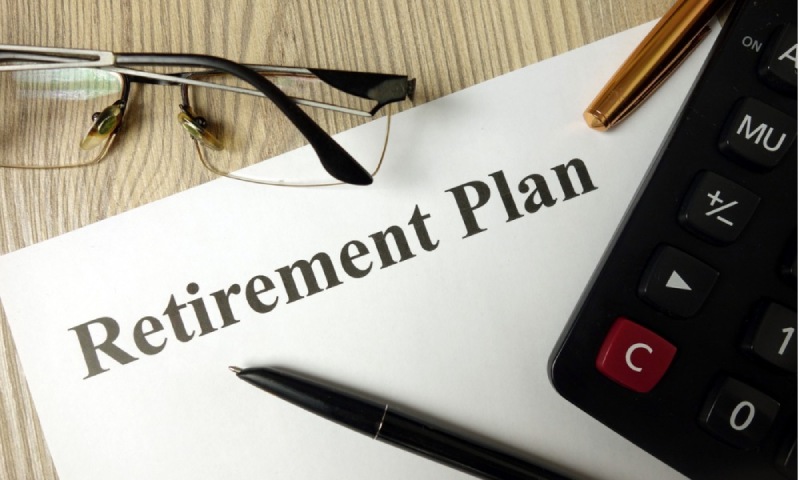Lifestyle
How to Manage Your Retirement Savings in a Volatile Market

We never know when the stock market will give us a shock. The 10th of April was the same.
The most recent data from the Bureau of Labor Statistics indicates that US consumer prices in March were higher than anticipated. After increasing by 3.2% annually in February, the Consumer Price Index increased by 0.4% in March and by 3.5% overall.
Many investors who had jumped aboard the bandwagon of “let’s sell stocks” were shaken by that news. The end of the day saw a 1.1% decline in the Dow Jones Industrial Average (^DJI) and a nearly 1% decline in the S&P 500 (^GSPC).
The fear that inflation might be on the rise again and that the US Federal Reserve might not lower interest rates this year was what drove the rush to dump shares. On April 11, US stocks faltered once more following the release of the Producer Price Index, another economic report that showed a lower-than-expected increase.
These are all outside of your control.
It might have been a one-time event, but the market might clam up again if inflation doesn’t decline and forces the Federal Reserve to postpone interest rate cuts longer.
What happens next? I asked several experts if it’s better to stick with the current course of action or think about modifying retirement-targeted holdings.
Here’s what to do with your retirement funds in the event of volatile markets.
Focus on long-term goals
With the S&P 500 up 26.29% and the Dow industrials up 13.7%, many Americans’ retirement savings account balances had a very good year last year.
Therefore, it’s understandable if the volatility this week has scared you and left you unsure of what to do.
“It’s a fine line with how investors should respond to volatility,” Christine Benz, Morningstar’s director of personal finance, told Yahoo Finance. “On the one hand, they mainly should tune it out and not be reactive. But on the other hand, it’s easy to get complacent, especially given that stocks’ performance has been exceptionally strong for the better part of the past 15 years.”
According to Benz, even for stock investors who haven’t actively added to their portfolios, the contents have changed. She stated that, for instance, a portfolio consisting of 60% stocks and 40% bonds in 2019 would have ended up with 70% stocks and 30% bonds by the end of 2023 due to the significant increase in stock values.
“Meanwhile, bond and cash yields have improved a lot, in turn improving their return prospects,” Benz added. “And we’re all five years older, and many retirees want a more conservative asset mix as they age.” So retirees, in particular, who haven’t revisited their asset allocations for a while, should consider doing so, Benz said.
When your portfolio deviates from your initial asset allocation—which was created to take into account your time horizon, risk tolerance, and financial objectives—by more than 7% to 10%, financial advisors typically advise rebalancing, or changing the proportion of stocks to bonds in your portfolio. Take your age and subtract it from 110 to get an approximate idea of the proportion of your portfolio that should be in stocks. Thus, a sixty-year-old would own 50% of stocks and the remaining amount in cash and bonds.
But be careful if you’re dying to do something big.
“It is very difficult to time the markets,” Marguerita M. Cheng, a certified financial planner and CEO at Blue Ocean Global Wealth in Gaithersburg, Md., told Yahoo Finance. “You may know when to get out of the market, but you may not know when to get back in. It’s very hard to be right twice.”
Take a deep breath if you are years away from retirement and are automatically contributing to a traditional or Roth IRA, or if you are setting aside money in your employer-sponsored retirement plan.
“You’re constantly investing when the market is high and when it is low, and that means whether the market moves up or down, the performance of your investments even out over the long haul,” Cheng said.
The fund manager will modify the portfolio and rebalance on your behalf if you have a static asset allocation fund or a target date fund that is classified as growth, moderate, or conservative, Cheng continued. Since those portfolios are linked to an anticipated retirement year (like 2055 or 2060), they are automatically rebalanced and tick more conservatively as time passes.
What occurs this week is not as important as what occurred last year. Your investment portfolio may be out of balance in terms of diversification with a balance of cash, stocks, and bonds, or stock and bond funds, following the surge in stocks last year.
Time for your annual checkup
Now is a good time to consider long-term objectives and financial planning. Cheng suggested taking a fresh look at your rebalancing plan as part of that.
“You’re not going to sell everything; you’ll only pare back to ensure your 60/40 portfolio isn’t 65/35 or 67/33,” she said. “Rebalancing your portfolio can help you have risk alignment, which means assuming the appropriate level of risk tolerance and risk capacity.”
For example, it might be a good idea to rebalance your retirement portfolio so you have some cash on hand and can take profits on part of your stock appreciation if you’re concerned that a significant market sell-off will occur right before you’re about to retire. For the first few years of your retirement, this will be your safety net. You won’t have to sell stocks at a loss to pay your living expenses if the market declines.
“Stocks have a market risk, but for long-term investors, you do want to make sure that you stay invested in stocks,” Cheng said. “And by the way, everyone, even someone who is retired today, is a long-term investor.”
Bonds must also be included
Ken Tumin, a senior industry analyst at LendingTree and the founder of DepositAccounts.com, told Yahoo Finance that given the current high-interest rates on fixed-income investments, it makes sense to shift some of your holdings from high-risk stocks to low-risk options like Treasury securities and CDs. Although those yields have somewhat decreased recently, they are still high when compared to prior years.
“With inflation and the economy making it difficult for the Fed to lower rates anytime soon, Treasury bills/notes and bank CDs should continue to offer yields higher than what we’ve seen in more than a decade,” Tumin said.
Certain high-yield savings accounts and certificates of deposit actually pay more than 5%. The best CD rates, which are primarily found on internet banks, were recently over 5.5% for a one-year certificate.
Additionally, longer-term bond yields might be appealing because the Fed is probably going to postpone cutting rates for a while longer.
According to Lisa A.K. Kirchenbauer, the founder of Omega Wealth Management in Arlington, Virginia, “Do we have an opportunity, before rates start heading down and bond prices go up”? she asked Yahoo Finance.
All of these advisors are sending the same clear message: Adjust retirement accounts as needed but don’t make hasty decisions. Checking never hurts.
-

 Business3 weeks ago
Business3 weeks agoNayef Doleh Examines International Humanitarian Fundraising Strategies
-

 Business3 weeks ago
Business3 weeks agoHow Black Banx is Redefining Global Banking Strategies in 2025
-

 Business2 weeks ago
Business2 weeks agoHow to fill MSME Form 1? Step-by-Step Guide
-

 Education4 weeks ago
Education4 weeks agoSchool Of Odd Thinkers – Think Odd, Learn a lot, and Earn a lot
-

 Tech4 weeks ago
Tech4 weeks agoMicrosoft Teams to End SMS Messaging Feature Support for Android Phones and Switch to Phone Link App as Alternative
-

 Festivals & Events3 weeks ago
Festivals & Events3 weeks agoInteresting Facts about St. Patrick’s Day
-

 Education4 weeks ago
Education4 weeks agoJeffrey Laino Offers a Close Look at Literary Analysis Implementation
-
Business2 weeks ago
From Marine to Chief: The Leadership Journey of Sean Mannix

























